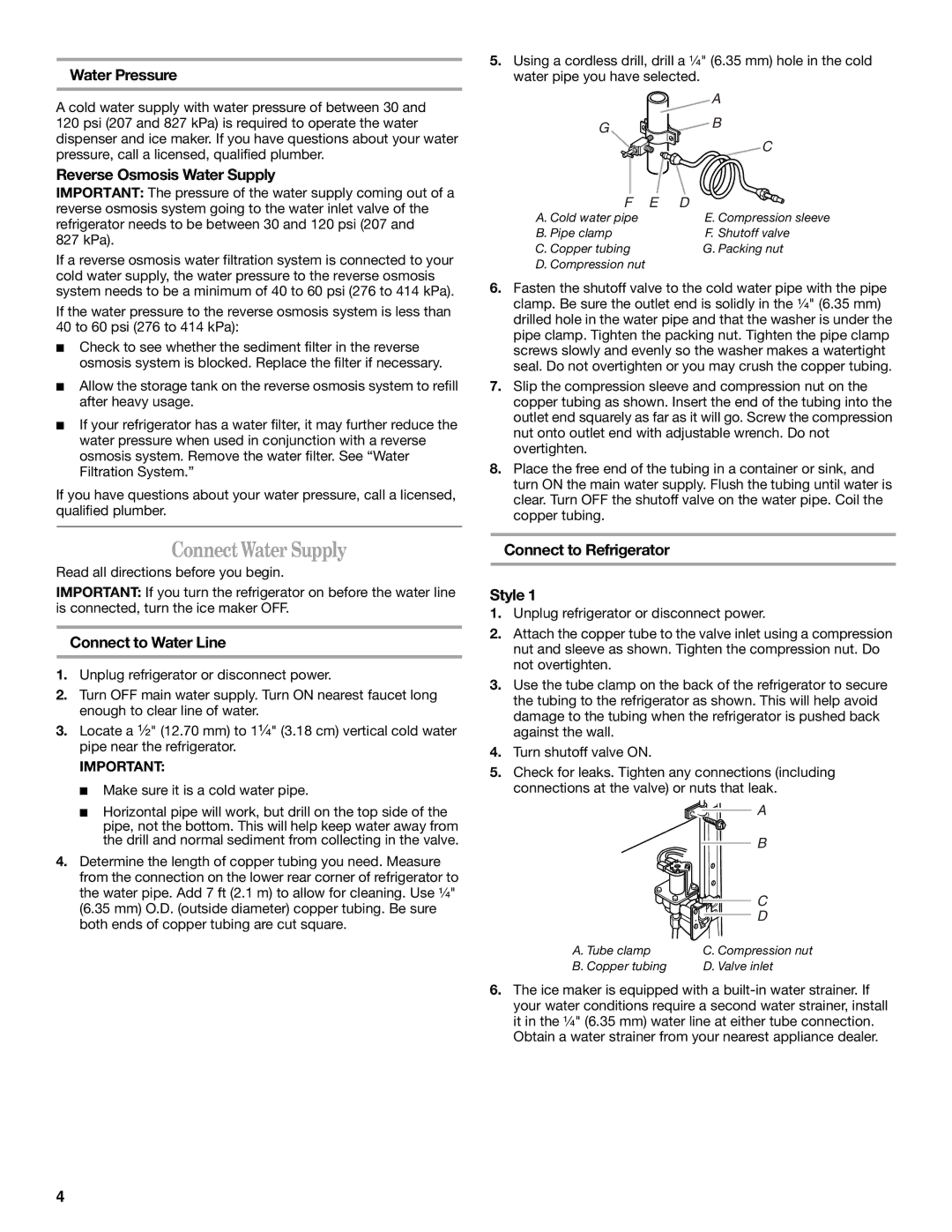T2RFWG2, T1WG2L specifications
The Amana T1WG2L and T2RFWG2 are part of Amana's line of high-efficiency washing machines and dryers, designed to meet the needs of modern households while delivering exceptional performance and convenience. With a suite of advanced features, these appliances are built to make laundry chores simpler and more efficient.Starting with the Amana T1WG2L washer, this front-loading machine is engineered with a robust set of features tailored to enhance the washing experience. One of its standout characteristics is its high-efficiency design that reduces water and energy consumption, resulting in lower utility bills. The washer is equipped with a variety of wash cycles and options, including delicate, heavy-duty, and quick wash settings, allowing users to customize each load based on fabric type and soil level.
The T1WG2L also incorporates a stainless steel drum, which is designed for durability and performance. This material resists chipping and is less likely to retain odors. Combined with the unit's efficient suspension system, it ensures that clothes come out clean while minimizing wear and tear. Additionally, the washer features an advanced load sensing technology that adjusts water levels according to the size of the load, further enhancing efficiency.
Moving on to the Amana T2RFWG2 dryer, it perfectly complements the T1WG2L with its smart drying capabilities. The dryer is equipped with multiple drying cycles to cater to various fabric types such as towels, delicates, and heavy items. One of the key features is the moisture sensing technology, which intelligently detects moisture levels in the drum and automatically adjusts drying time to prevent over-drying. This not only saves energy but also helps to keep clothes looking their best.
Another significant feature of the T2RFWG2 is its wrinkle-prevent option, which tumbles clothes intermittently after the drying cycle is finished, helping to reduce wrinkles and ironing time. The dryer is also designed with a large capacity, allowing users to dry larger loads at once, making laundry days less tedious.
Both the T1WG2L and T2RFWG2 are designed with user-friendly controls, making them easy to operate even for those unfamiliar with modern washing and drying technology. Their sleek design ensures they fit seamlessly into any laundry room, while their advanced features promote efficiency and convenience.
In summary, the Amana T1WG2L and T2RFWG2 washing machine and dryer combination showcases advanced technology and thoughtful design, making them reliable companions for laundry day. With their focus on efficiency, durability, and ease of use, these appliances are a smart investment for any household looking to simplify its laundry process.

